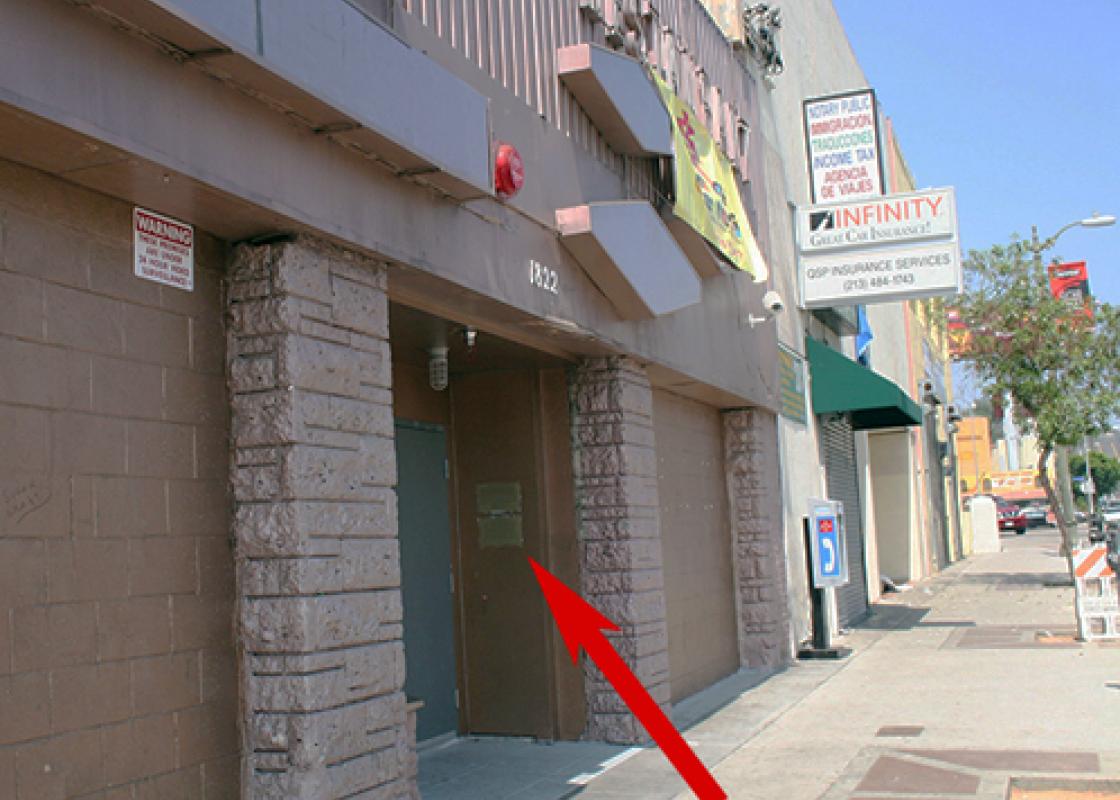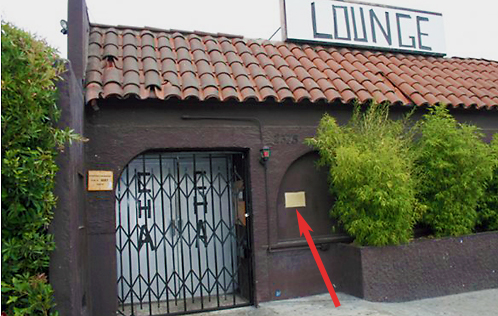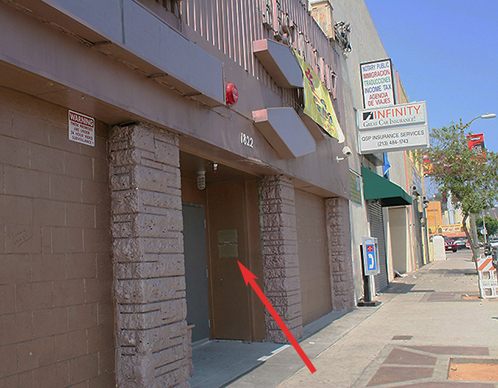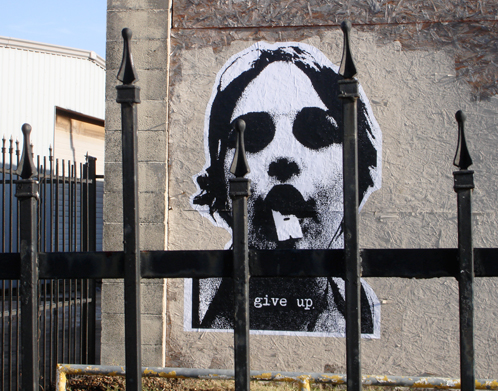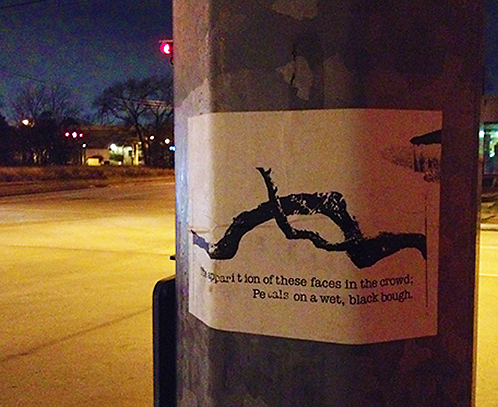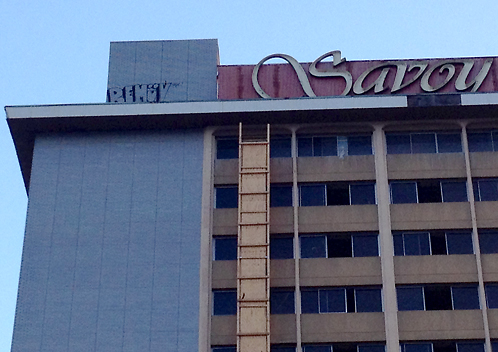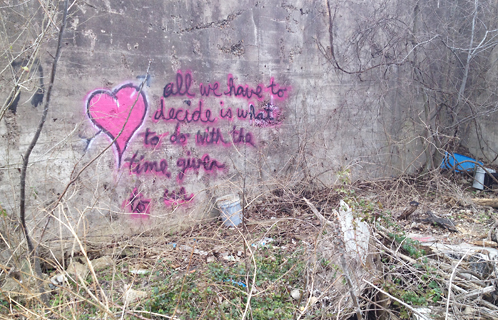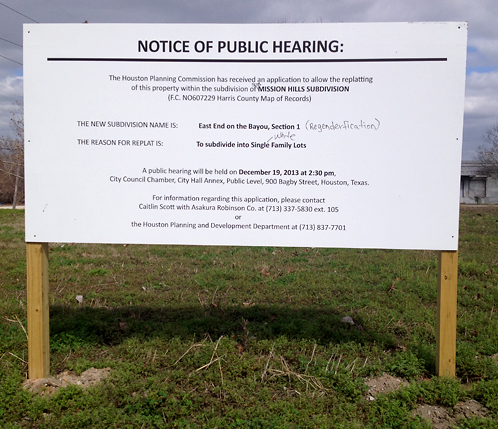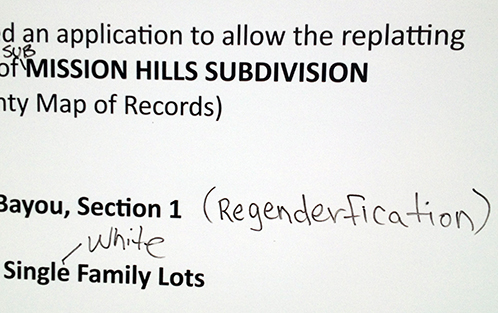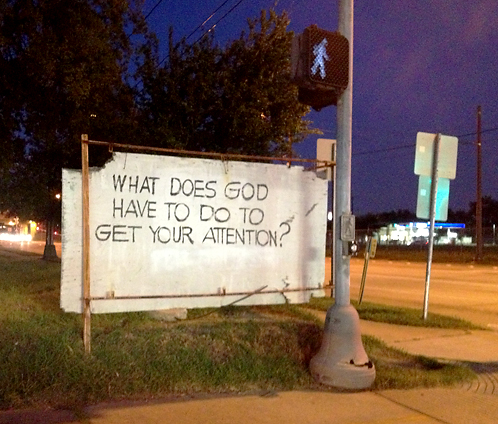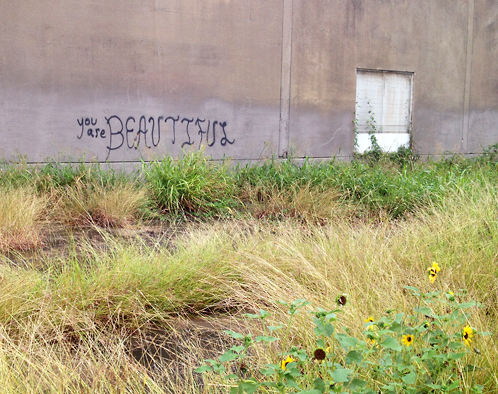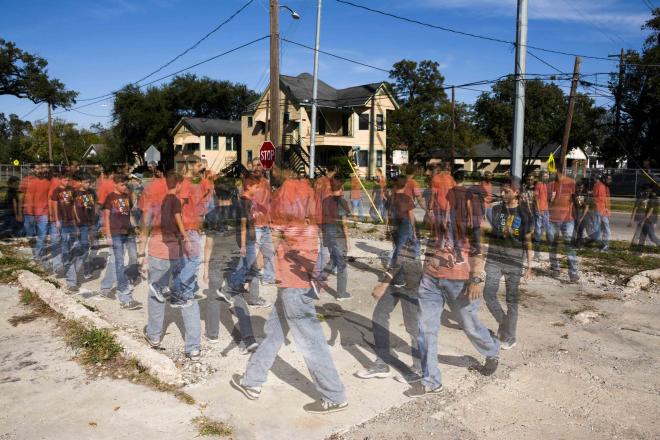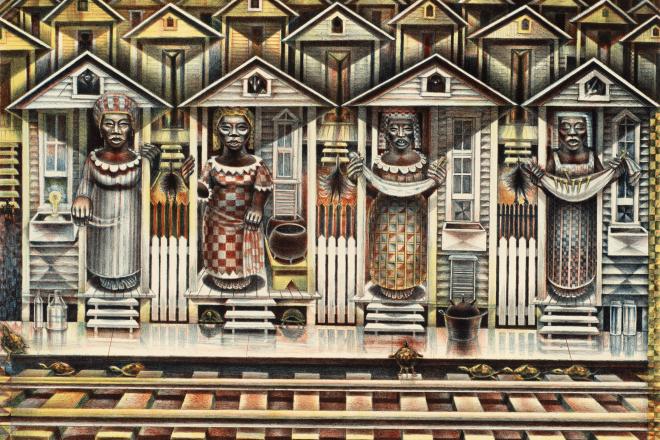"Tactical" plaque at former Le Barcito in Los Angeles. Photo: Pocho Research Society.
Signage, as Robert Venturi, Denise Scott Brown, and Scott Izenour argue in Learning from Las Vegas, is architecture. The heraldries of corporate logos and fonts of local businesses dominate our built environment as much as gables or spandrels do. Sandra de la Loza, a Los Angeles-based artist and activist, sees that dominance as an opportunity for political action.
Two weeks ago, she was in Houston for CounterCurrent, the five-day Cynthia Woods Mitchell Center for the Arts festival. At the Antena @ Blaffer space at the University of Houston, de la Loza gave a lecture and led a workshop about what she terms "tactical signage." Her use of "tactical" is, here, tactical: The actions she encourages are "everyday, if ephemeral, [ones] that people can do to transform landscapes," whether they're using Sharpies to add wings to the black silhouettes of deer forever leaping on road signs or sticking stickers on utility poles.
Many of de la Loza's own acts of tactical signage are documented on her website and in her book, The Pocho Research Society Field Guide to L.A.: Monuments and Murals of Erased and Invisible Histories. I'm most intrigued by a campaign of faux-historic plaques that she affixes to buildings and around other sites that have become "invisible." Some of these are the longtime LGBT bars in her L.A. neighborhood, Echo Park, that have been flipped into hipster hangouts in recent years as gentrification creeps in. The plaques present as genuine, official, almost. "But they're taken off sometimes in a day, sometimes in a week," she explains. Still, their strange poetry recalls, for as long as the plaques remain, what can no longer be seen, as with the "Former Site of Klub Fantasy:"
Here stood the intrepid KLUB FANTASY a site for sore eyes that struggled to love while following a banda heartbeat. Cheek to cheek and vestido to vestido mujeres flocked to this oasis every Sunday when Nayarit stood it's [sic] ground on Sunset Boulevard when the uniform involved Dickies and nothing was ironic about old T-shirts. . . .
De la Loza's work, though more overtly political and with a more discernible M.O., makes me think of some of the things I've seen around Houston. I was surprised when de la Loza said that she noticed less signage here than in L.A., less graffiti. I mentioned the East End. I mentioned Rebirth of Our Nationality by Leo Tanguma. I mentioned Daniel Anguilu. I mentioned those cartoonish freeway purple dranks. I mentioned Stick 'Em Up!, the documentary about Houston street art by Alex Luster.
Here, in certain neighborhoods, street art --- or maybe you'd call it criminal mischief, or advertising, or civil disobedience, or tactical signage, or vandalism, or whatever --- is everywhere. Though I'm dismayed by, say, the very fresh, very juvenile swirlies that have already showed up on some of the newly constructed features at Buffalo Bayou Park, I'm interested, too, in what drives the act. It's a free country.
But someone else's property is, as the tautology goes, someone else's property. If I owned a store that got tagged, I'd be upset. If I were a developer and some anticapitalist ripped down my sign advertising some acreage for sale, I'd be cranky about having to fork over my hard-earned money to replace it. In Stick 'Em Up!, the guy who goes by Give Up says that he thinks of his work, despite its illegality, as a kind of guerrilla beautification. He operates with a moral code, even. He won't paste his prints on private property; he doesn't want to detract from anyone's right to do business. But he doesn't see why, if local politicians can have staffers nail their campaign signs on dilapidated buildings or hijack billboards, he can't do a little signifying of his own. Thus: "Street art culture," reasons de la Loza, "is a plural space with all the contradictions of any other."
All this signage shows us just how contested the space of the city is, how contradictory --- and how many --- the messages that Houstonians want to communicate really are. Is it possible not to take a side? I love the discombobulating superabundance of it all, the languages, fonts, sizes, colors, the corny slogans, the head-skratchin' spelling, the misplaced apostrophes and misused quotation marks. I love that it all seems to adhere to that basic universal law, that every action yields its opposite, its equal. Here is a collection of some of the reactions that I've seen in the city this year.


